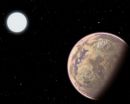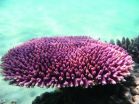(Press-News.org) Humanity is on the threshold of being able to detect signs of alien life on other worlds. By studying exoplanet atmospheres, we can look for gases like oxygen and methane that only coexist if replenished by life. But those gases come from simple life forms like microbes. What about advanced civilizations? Would they leave any detectable signs?
They might, if they spew industrial pollution into the atmosphere. New research by theorists at the Harvard-Smithsonian Center for Astrophysics (CfA) shows that we could spot the fingerprints of certain pollutants under ideal conditions. This would offer a new approach in the search for extraterrestrial intelligence (SETI).
"We consider industrial pollution as a sign of intelligent life, but perhaps civilizations more advanced than us, with their own SETI programs, will consider pollution as a sign of unintelligent life since it's not smart to contaminate your own air," says Harvard student and lead author Henry Lin.
"People often refer to ETs as 'little green men,' but the ETs detectable by this method should not be labeled 'green' since they are environmentally unfriendly," adds Harvard co-author Avi Loeb.
The team, which also includes Smithsonian scientist Gonzalo Gonzalez Abad, finds that the upcoming James Webb Space Telescope (JWST) should be able to detect two kinds of chlorofluorocarbons (CFCs) -- ozone-destroying chemicals used in solvents and aerosols. They calculated that JWST could tease out the signal of CFCs if atmospheric levels were 10 times those on Earth. A particularly advanced civilization might intentionally pollute the atmosphere to high levels and globally warm a planet that is otherwise too cold for life.
There is one big caveat to this work. JWST can only detect pollutants on an Earth-like planet circling a white dwarf star, which is what remains when a star like our Sun dies. That scenario would maximize the atmospheric signal. Finding pollution on an Earth-like planet orbiting a Sun-like star would require an instrument beyond JWST -- a next-next-generation telescope.
The team notes that a white dwarf might be a better place to look for life than previously thought, since recent observations found planets in similar environments. Those planets could have survived the bloating of a dying star during its red giant phase, or have formed from the material shed during the star's death throes.
While searching for CFCs could ferret out an existing alien civilization, it also could detect the remnants of a civilization that annihilated itself. Some pollutants last for 50,000 years in Earth's atmosphere while others last only 10 years. Detecting molecules from the long-lived category but none in the short-lived category would show that the sources are gone.
"In that case, we could speculate that the aliens wised up and cleaned up their act. Or in a darker scenario, it would serve as a warning sign of the dangers of not being good stewards of our own planet," says Loeb.
INFORMATION:
A new approach in the search for extraterrestrial intelligence: targeting alien polluters
2014-07-23
ELSE PRESS RELEASES FROM THIS DATE:
An increase in temperature by 2050 may be advantageous to the growth of forage plants
2014-07-23
A 2°C increase in temperature around the world by 2050, according to one of the scenarios predicted by the Intergovernmental Panel on Climate Change (IPCC), may be advantageous to the physiology and the biochemical and biophysical processes involved in the growth of forage plants such as Stylosanthes capitata Vogel, a legume utilized for livestock grazing in tropical countries such as Brazil.
The conclusion is from a study carried out by researchers in the Department of Biology at the Ribeirão Preto Faculty of Philosophy, Sciences and Languages and Literature at the University ...
New method for reducing tumorigenicity in induced pluripotent stem-cell based therapies
2014-07-23
New Rochelle, NY -- The potential for clinical use of induced pluripotent stem cell (iPSC) technology for transplant-based therapeutic strategies has previously been hindered by the risk of dysregulated cell growth, specifically the development of tumors. The ability to use etoposide treatment to halt teratoma formation in iPSCs for the treatment of heart disease, specifically acute myocardial infarction, is demonstrated in an article in Stem Cells and Development, a peer-reviewed journal from Mary Ann Liebert, Inc., publishers. The article is available on the Stem Cells ...
Research charts the ecological impact of microbial respiration in the oxygen-starved ocean
2014-07-23
A sulfur-oxidizing bacterial group called SUP05 will play an increasingly important role in carbon and nutrient cycling in the world's oceans as oxygen minimum zones expand, according to research published this week in the Proceedings of the National Academy of Sciences.
University of British Columbia researchers plumbed the depth of a seasonally anoxic fjord, Canada's Saanich Inlet, to chart how microbial community metabolism changes as oxygen minimum zones form.
"Our study paints a very detailed picture of how SUP05 — a bacterial group related to gill symbionts of ...
Calcification in changing oceans explored in special issue of The Biological Bulletin
2014-07-23
WOODS HOLE, MA -- What do mollusks, starfish, and corals have in common? Aside from their shared marine habitat, they are all calcifiers—organisms that use calcium from their environment to create hard carbonate skeletons and shells for stability and protection.
The July issue of The Biological Bulletin, published by the Marine Biological Laboratory, addresses the challenges faced by these species as ocean composition changes worldwide.
As atmospheric carbon dioxide rises, the world's oceans are becoming warmer and more acidic. This impact of global climate change threatens ...
Somatosensory stimulation inhibits excitability of pyramidal cells in rat hippocampal CA1
2014-07-23
The hippocampal region of the brain is important for encoding environment inputs and memory formation. However, the underlying mechanisms are unclear. Dr. Zhouyan Feng and co-workers from Zhejiang University, China monitored the activity of hippocampal neurons in rats using microelectrode arrays, and explored the mechanisms underlying the neuronal responses. Somatosensory stimulation, in the form of tail clamping, changed local field potentials into theta rhythm-dominated waveforms, decreased the spike firing of pyramidal cells, and increased interneuron firing. In addition, ...
Unbreak my heart
2014-07-23
This news release is available in German.
Researchers of the Max Planck Institute of Molecular Cell Biology and Genetics in Dresden report how they managed to capture detailed three-dimensional images of cardiac dynamics in zebrafish. The novel approach: They combine high-speed Selective Plane Illumination Microscopy (SPIM) and clever image processing to reconstruct multi-view movie stacks of the beating heart. Furthermore, they have developed a method of generating high-resolution static reconstructions of the zebrafish's heart: the Dresden research team used optogenetics ...
Australian researchers pioneer a 'Google street view' of galaxies
2014-07-23
A new home-grown instrument based on bundles of optical fibres is giving Australian astronomers the first 'Google street view' of the cosmos — incredibly detailed views of huge numbers of galaxies.
Developed by researchers at the University of Sydney and the Australian Astronomical Observatory, the optical-fibre bundles can sample the light from up to 60 parts of a galaxy, for a dozen galaxies at a time.
By analysing the light's spectrum astronomers can learn how gas and stars move within each galaxy, where the young stars are forming and where the old stars live. This ...
K computer runs largest ever ensemble simulation of global weather
2014-07-23
Ensemble forecasting is a key part of weather forecasting today. Computers typically run multiple simulations, called ensembles, using slightly different initial conditions or assumptions, and then analyze them together to try to improve forecasts. Now, using Japan's flagship 10-petaFLOPS K computer, researchers from the RIKEN Advanced Institute for Computational Science (AICS) have succeeded in running 10,240 parallel simulations of global weather, the largest number ever performed, using data assimilation to reduce the range of uncertainties.
The assimilation of the ...
Physical work environment in hospitals affects nurses' job satisfaction
2014-07-23
Job satisfaction is an important predictor of registered nurses' (RNs) job turnover, patient satisfaction, and nurse-sensitive patient outcomes (including pressure ulcers and falls), which can result in higher health care costs and penalties for hospitals that receive Medicare and Medicaid payments. Numerous studies have been conducted to assess nurses' job satisfaction, asking about nurse-physician relationships, opportunities for promotion, autonomy, and similar issues, but very few have addressed the impact of the physical work environment on RNs' job satisfaction.
Now, ...
Minimizing drag to maximize results
2014-07-23
One of the most exciting parts of the Tour de France for spectators is the tactical vying for spots in the breakaway group at the front of the pack.
In trying to better understand the aerodynamic interactions between cyclists, researchers from Monash University and the Australian Institute of Sport studied how riders' drag was affected by the relative position of multiple cyclists (in a formation).
Nathan Barry, a PhD student from the Department of Mechanical and Aerospace Engineering, said the research, undertaken by the Monash Wind Tunnel Sports Group, was designed ...




